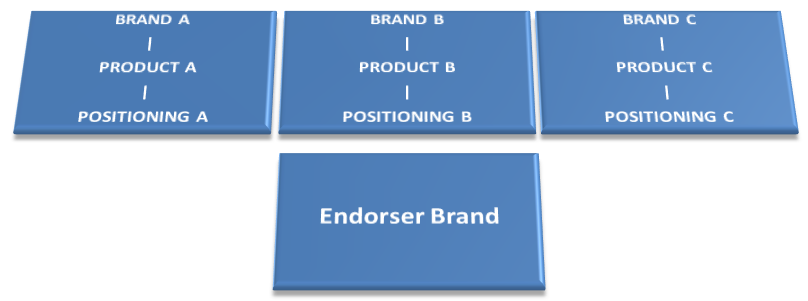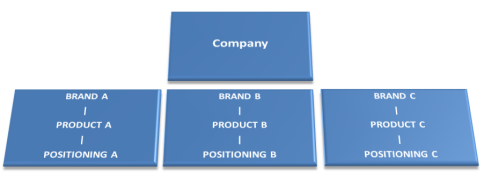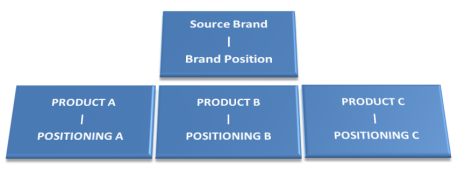How your brand architecture strategy influences the success of your marketing efforts
Brand Strategy
What is branding?
There are two schools of thought that sound alarm bells when the topic of branding (or rebranding) is broached.
- Branding can solve everything.
- Branding achieves nothing.
The reality is that effective branding is tough.
We’ve detailed the importance of branding to your marketing practice in previous resources, but continue to find that either the intangible nature of branding practice and management evokes mixed reactions when it comes down to assessing the real-world value of subjective corporate assets like brand identity, messaging, positioning and experience, or it's viewed as a blanket solution for more ingrained issues.
For those who share this perspective, analysing your company’s brand architecture strategy represents both a more pragmatic, grass-roots approach to the management, promotion and extension of product and service lines and internal corporate structure, as well as a framework for internal analysis that can identify factors impeding the success of your customer-facing branding initiatives.
Defining Brand Architecture Strategy
Brand Architecture strategy is an inside-out approach to organising a company’s brand offerings - the structure upon which you build your brand.
Internally, this involves developing a framework that identifies how existing brands, products and services interplay with one another, defining which elements will be presented consistently across these products and services, and creating a criteria through which all subsequent extensions are tested for perceived fit.
Externally, this process culminates in the development of the framework through which consumers understand and organise those products and services within their minds.
Risks of Misaligned Brand Architecture
The design of a brand architecture strategy is similar to conventional architectural design in that it's grounded by the finished structure’s purpose. But over time, in the same way that a basement operation inevitably places restrictions on the growth of a young start-up company, a misaligned or unrefined architecture strategy can come to restrict the success of branding initiatives, obscure new opportunities from view and, worse still, deceive you into thinking you can’t do better.
An unrefined brand architecture strategy poses a number of threats to your business, including:
- Deteriorating customer based brand equity by creating confusion, or a disconnect within consumer’s minds about your brand.
- Higher costs in terms of branding and marketing resources.
- Undermining other branding initiatives and/or the cannibalisation of product sales.
- Unobtainable, or misaligned long-term business goals and growth strategies.
By taking the time to create and maintain a sophisticated structure, these risks can be mitigated and your efforts and expenditure optimized, allowing your brand to enjoy refined brand awareness and improved brand image.
Types of Brand Architecture Structures
There are two archetypal brand architecture types, the ‘branded house’, and ‘house of brands’.
Branded house structures are characterised by products and services that primarily bear the organization’s brand name to motivate purchases and communicate value, while house of brands structures are typically comprised of owned products and services that feature a wide variety of brand names.
These models serve as useful foundational frameworks when beginning the process of tailoring a variation or hybrid model that best suites your company’s unique needs.
Branded House Variations
A Masterbrand structure is characterised by a single, recognizable brand name that aligns individual products under the corporate entity’s brand positioning. These products typically span multiple product categories (Eg: FedEx).


An Endorser Brand structure is characterized by a series of individual products, each with its own unique brand and positioning, that also feature a well-known company name as a means of endorsing quality and leveraging brand awareness to motivate purchases (Eg: Marriot International).


House of Brands Variations


A Product/Service Brand structure is characterised by uniquely branded product lines, each with their own unique positioning, where no equity or awareness is leveraged from the parent corporate brand i.e. it remains hidden (Eg: Procter & Gamble).


A Source Brand structure is characterised by a parent brand that is well-known and guarantees quality, but also takes a back seat to the individual products themselves. In this model, while the source brand equity and positioning have an influence, the products themselves are the heroes with their own unique (but aligned) positioning (Eg: Nestle).
Strategic Implications
There is an intrinsic relationship between your corporate brand architecture and:
Your Long-term Business Goals
A private company with goals of going public can leverage a brand-centric masterbrand structure to facilitate higher levels of customer-based brand equity, and in turn, a higher valuation than competitors with more compartmentalised, product-brand structures in place.
Your Strategic Direction
A company whose main competition uses complex masterbrand structures, may have an opportunity to differentiate by creating a unique brand for one or more business units with branding initiatives positioned around specialisation and 'best-in-breed' status.
Your Bottom Line
Technology-based companies operating within an industry characterised by a high-level of innovation typically avoid product-brand strategies as the costs of branding and marketing every new product are far too high. For this reason, tech-based companies typically adopt a masterbrand strategy to leverage brand equity, awareness and positioning for each new product.
In the case of your company, it's important to question whether you can afford to maintain the marketing and branding demands of your present architecture.
Sound Foundations for Growth
While the fundamentals of brand architecture analysis and strategy are relatively simple, their effective application and implementation is often quite complex, and the consequences of failure are far-reaching and often difficult to diagnose.
These types of decisions hinge on your unique strategic direction and whether your internal management structure can accommodate - or can be altered to accommodate - such changes.
Up until now you may have been able to mitigate the constraints of your brand’s misaligned architecture by adding an extension or building another story, but the best thing for your brand in the long-term may infact require tearing down these old structures to be able to redesign and strengthen your brand’s foundations.





